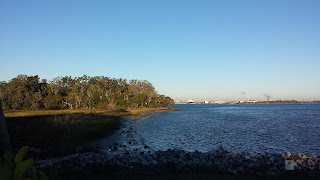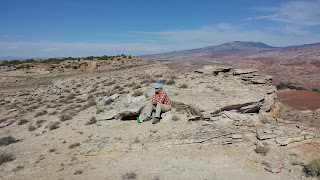 |
| Florida's Sasquatch |
While Florida does have liter laws and fines, they're not prohibitive or even
 |
| 47 bottles of Sutter Home on the road 47 bottles of wine you pick one up and throw it away 46 bottles of Sutter Home on the road |
Also intriguing were the 47 empty mini Sutter Home wine bottles, and their cardboard containers on both sides of a 200 ft stretch of the road. Sure there were a few Coors Lite, and Budweiser cans but why all the Sutter Home? Why are they thrown only in that location? Certainly the littering party is trying to hide their drinking but Sutter Home?..there are just more questions than answers.
More impressive however, were the botanical findings. Squirrel skulls, armadillo armor, and a gopher tortoise shell. Like many places there are lots of squirrels in Florida. They're still generally wild, foraging for acorns from the oaks and eating other wild plants. They're only interested in people as something to occasionally scold and they seem amazingly car smart. They're not the kind of squirrel that waits on the side of the road then darts out, daring the driver to stop or swerve. That's why the three squirrel skulls, along with various vertebra and limb bones were surprising. The skulls were fully intact. Gleaming white, they were almost cute enough to take home and display. Maybe a new type of Christmas ornament?
 |
| Actual living, but not moving, armadillo |

The last of the clean up day roadside attractions, the Gopher tortoise shell was pretty special. Gopher tortoises are a protected, keystone species. They dig holes and tunnels (hence the 'gopher') that are used by over 360 other creatures. Gopher tortoises are endangered. so finding a large shell on the roadside was a nice surprise. The wild creatures, especially in the Preserve, are still surviving.
Compared to giant apes, oranges and Florida's other roadside attaractions, gopher tortoise, armidillo and squirrel skulls along with some intreguing litter might not seem exciting. Admittedly they aren't, but the certainly do provide a brief glimpse in Florida life.




























 C
C














